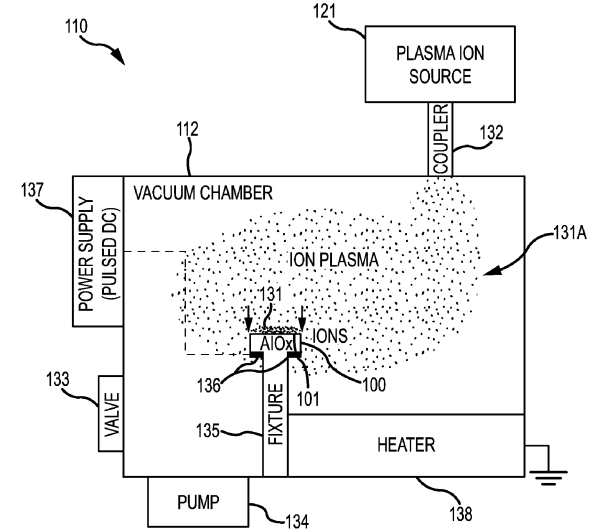Apple Patent For Process To Strengthen Sapphire Display Covers And Reduce Cracking

Apple devices may become more durable now that the company has invented a way to harden sapphire screens, making them more resistant to cracking.
The U.S. Patent and Trademark Office published a patent application from the Cupertino, California, tech giant on Thursday covering a process that strengthens sapphire without using chemical treatments. Apple Inc. (NASDAQ:AAPL) notes in its patent application, titled “Sapphire Property Modification through Ion Implantation,” that while sapphire may be harder than glass, there isn’t a well-established process, such as chemical strengthening, to improve the strength of the material even further.
As a result, Apple has proposed a new method that implants the sapphire material with ions to create a compressive stress layer, which stops cracks from spreading. This is especially necessary with sapphire, since stress creates surface flaws on the material, which results in breaking or cracking.
Corning Inc. (NYSE:GLW) recently criticized sapphire as a display material for this same reason, but it seems that Apple has figured out how to make the material stronger.
Apple has proposed several ways of strengthening sapphire, including bombarding the sapphire with ions, which include argon, nitrogen, titanium and iron.

Since impurities in sapphire add color to the material, this method of application could be useful in strengthening a display panel while creating a color mask around the edges of the display, such as the black and white bezels you see on current iPhones.
It hasn’t been confirmed whether this process is being used on display covers for the highly anticipated 4.7-inch iPhone 6 and 5.5-inch iPhone 6L. But rumors indicate that sapphire display covers are likely to make their way into all iPhone 6L models and high-end iPhone 6 devices, which are expected to be announced during a Sept. 9 media event.
A similar patent filed by Apple was published in Europe in August, detailing a similar process, according to Patently Apple. The patent credits Apple product design engineers Dale Memering, Christopher Prest and Douglas Weber for the invention.
© Copyright IBTimes 2025. All rights reserved.





















